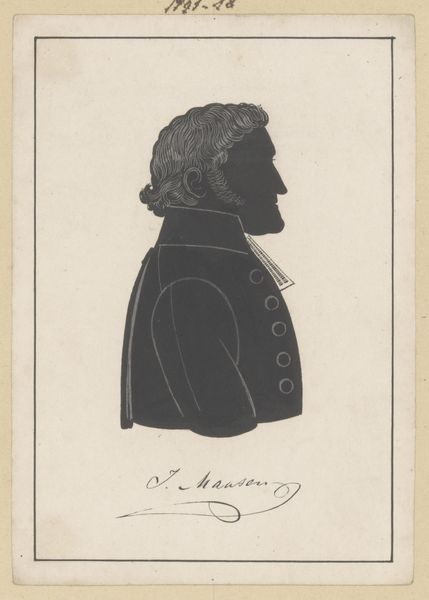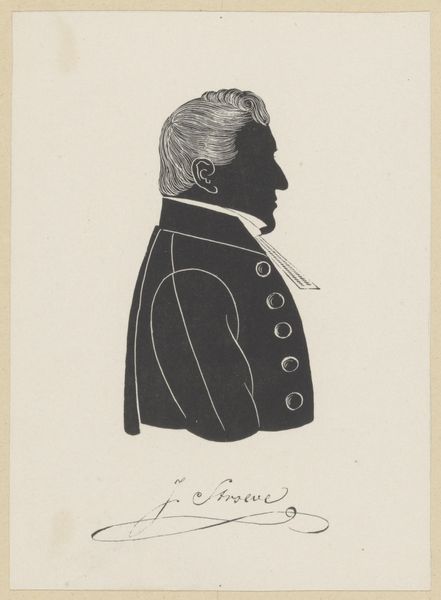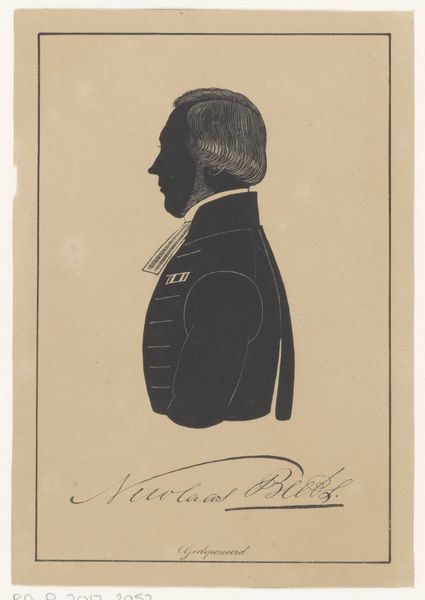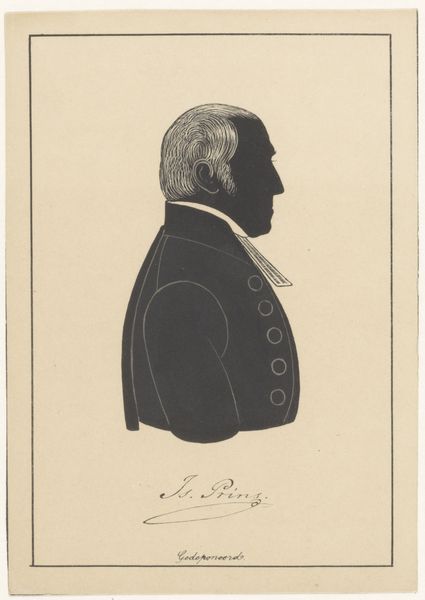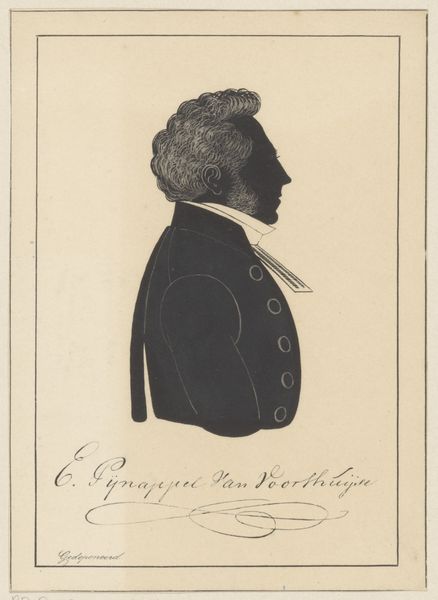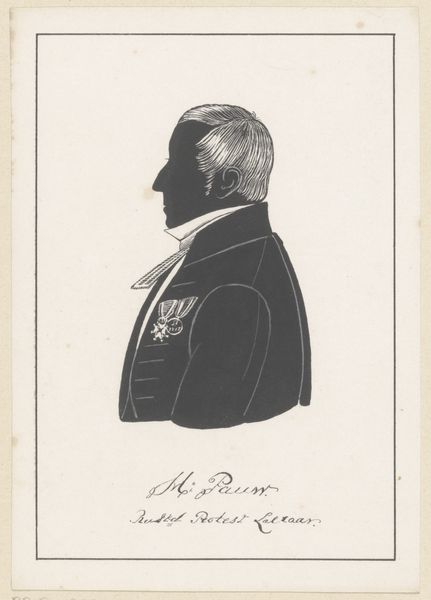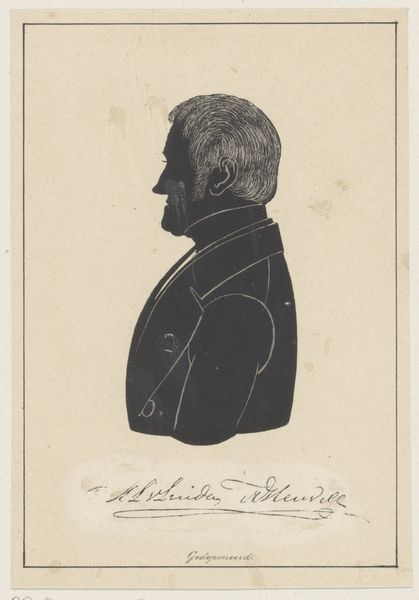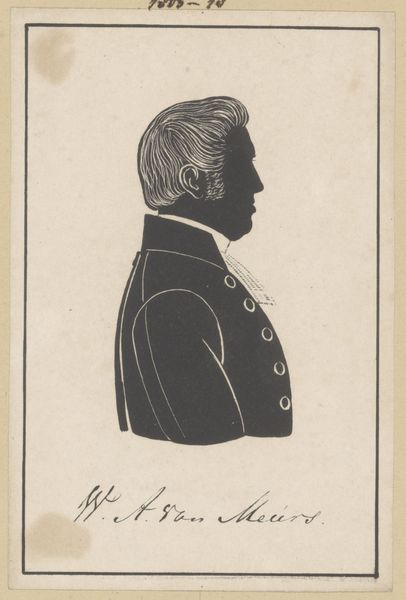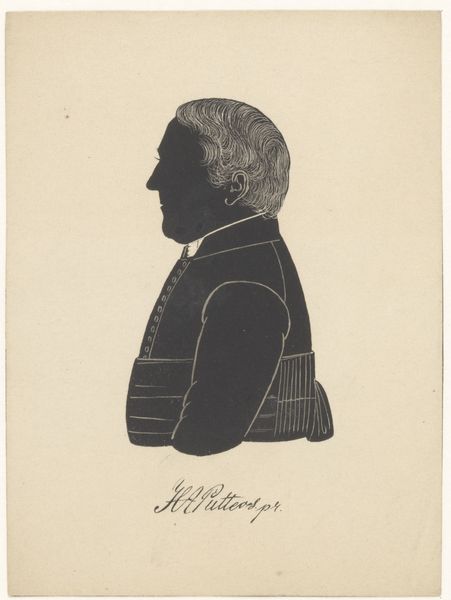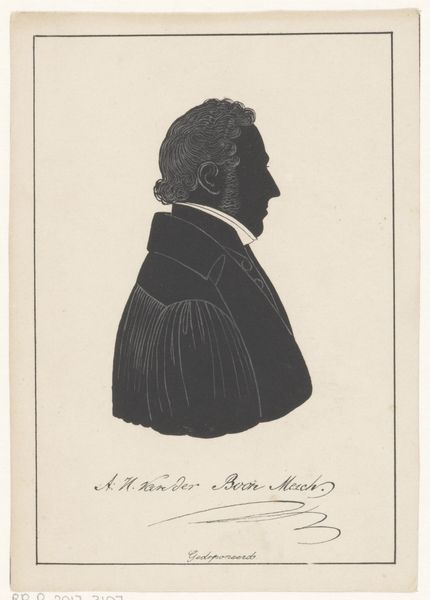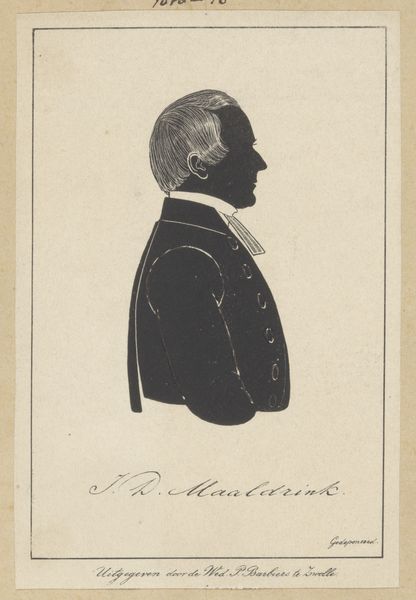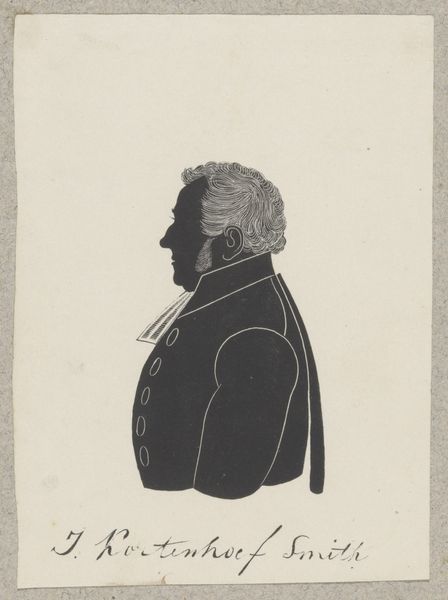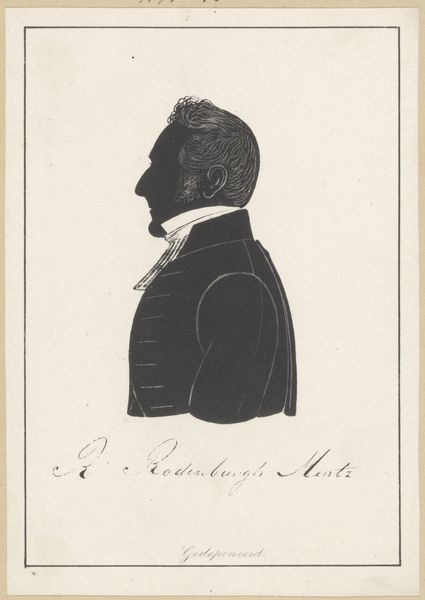
drawing, paper, ink
#
portrait
#
drawing
#
paper
#
ink
Dimensions: height 151 mm, width 105 mm
Copyright: Rijks Museum: Open Domain
Curator: Let's take a look at this silhouette portrait, made between 1809 and 1848. It's attributed to Pieter (IV) Barbiers, currently held here at the Rijksmuseum. Editor: My first impression is one of austerity and formality. The sharp contrast of the ink against the paper creates such a graphic and immediate image. Curator: Absolutely, the silhouette was a popular and affordable method of portraiture in the 18th and 19th centuries, a sort of precursor to photography accessible to the burgeoning middle class. We must consider this availability in relation to art and social standing, where more expensive oil painting may not have been possible. Editor: I find myself focusing on the economy of materials—just paper and ink—and how skillfully the artist uses these simple means to capture not just a likeness, but a sense of the sitter's bearing. It's fascinating to see what details were chosen, and which omitted; I wonder about the cultural context in which that economy was not just pragmatic but also potentially an aesthetic statement. Curator: The inscription identifies the sitter as Nanning Berkhout, although the identity is unconfirmed. These silhouette portraits served a practical function within the structures of family and professional life. Consider, too, the rise of scientific theories focused on physiognomy; the concept that one could determine a person's character or fate from their face shape, adding an additional layer of interpretation to portraiture. Editor: This artwork definitely makes me think about labor—both the labor of the sitter and the labor of the artist in service of this popular trend in commercial image making. We see that these techniques have continued and transformed, allowing people to self-represent today through accessible materials like smartphones. Curator: Reflecting on this piece, it allows a valuable intersectional lens into historical constructions of identity, class, and even evolving methods of artistic representation. Editor: It shows us the enduring power of simple materials, combined with skill, to create images that resonate across time, prompting us to reflect on production and representation even today.
Comments
No comments
Be the first to comment and join the conversation on the ultimate creative platform.
